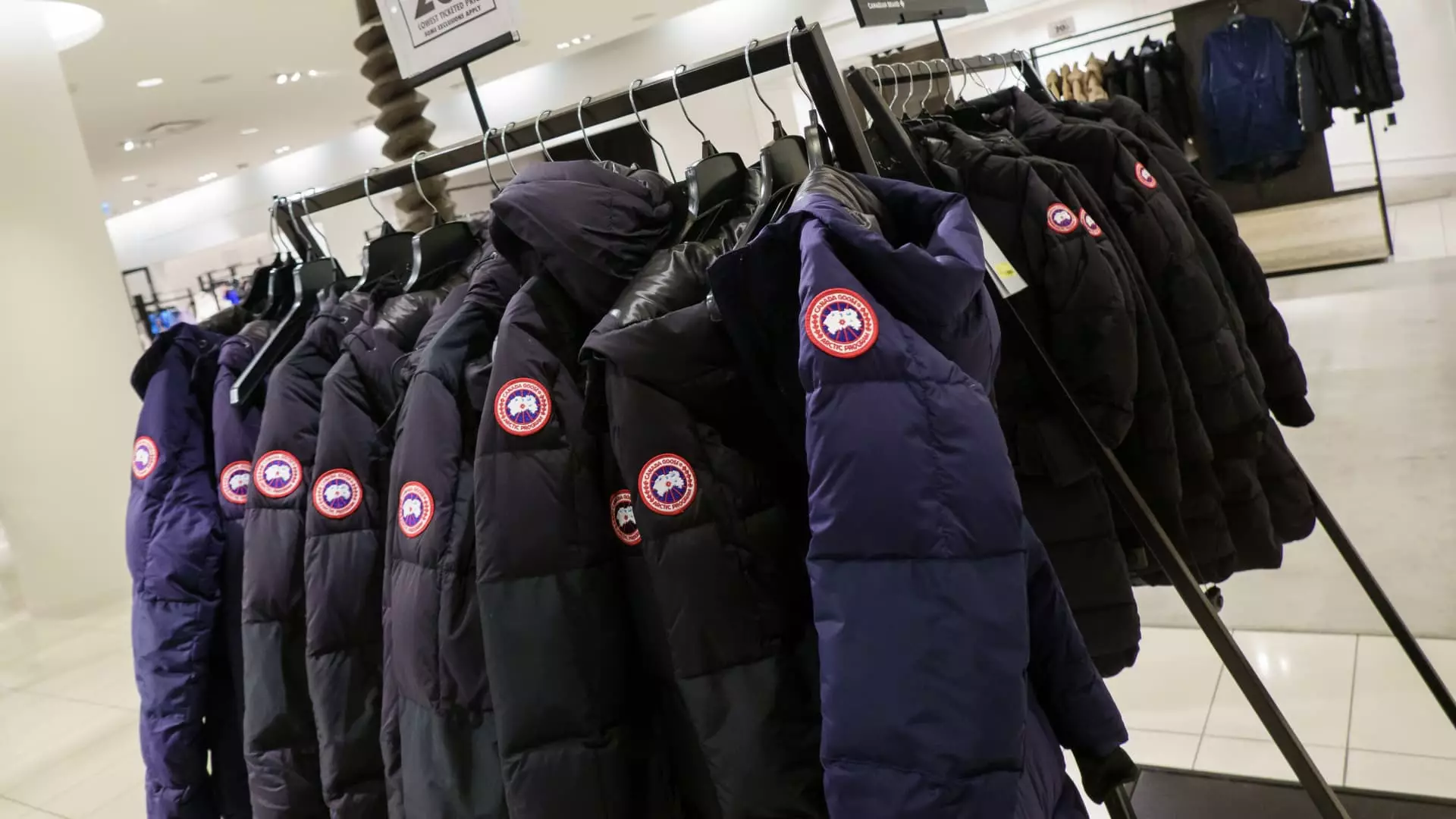In a remarkable show of resilience, Canada Goose’s shares jumped nearly 20% in response to a fiscal fourth-quarter report that exceeded Wall Street’s expectations. This surge, which at one point reached an impressive 28%, reflects not only the company’s financial performance but also the unwavering consumer faith in a brand that stands for premium quality in the world of luxury fashion. Yet, amid this exhilarating upswing, a looming cloud of uncertainty persists, as Canada Goose has opted to withdraw its fiscal 2026 outlook, citing “macroeconomic uncertainty” as a driving factor behind this critical decision.
The statement on the unpredictable global trading environment brings to light the precarious position many companies face today. As consumer spending habits shift—possibly due to inflationary pressures and a volatile economic climate—retailers are left with the daunting challenge of adapting swiftly not only to changing consumer desires but to the broader implications of an unstable marketplace. Canada Goose, renowned for its high-end winter apparel, is certainly not immune to these challenges. Nevertheless, the company remains optimistic about its brand strength and adaptability.
Solid Financial Results Amidst a Market Downtrend
Analyzing the financial figures from the recent earnings report reveals that Canada Goose experienced a revenue increase of 7.4% in comparison to the previous year’s fourth quarter. With revenue clocking in at CA$384.6 million and adjusted earnings surpassing expectations at 33 Canadian cents per share, it’s easy to see why investors might be feeling optimistic. In contrast, many other luxury retailers, such as LVMH and Burberry, are grappling with declining sales in the same period, indicating that Canada Goose is carving out a potentially sustainable niche in an otherwise precarious market.
While net income attributable to shareholders swelled to CA$27.1 million, it’s important to scrutinize the factors behind these figures. The adjustments made to exclude one-time items suggest that the company is keen on presenting a stable financial front. Still, one must question the long-term sustainability of such growth. As Canada Goose transitions towards offering non-winter products, including the recently launched eyewear collection, it appears to be broadening its horizons. The move aligns with the needs of a more diversified consumer base, potentially offsetting seasonal fluctuations in demand.
Tariffs: A Double-Edged Sword
Canada Goose’s operations have been affected by various tariffs, but the company’s leadership is professing confidence in its capacity to withstand such external pressures. COO Beth Clymer highlighted that a significant 75% of its products are manufactured domestically, thereby skirting some of the adverse effects of tariffs imposed under trade agreements like the USMCA. This is crucial for maintaining healthy profit margins, especially since the retail landscape appears increasingly fraught with complications stemming from international trade relations.
Yet, a critical examination raises concerns. If the company believes tariffs will have minimal financial impact, it could also be a sign of complacency. After all, while their operations might currently be insulated, the broader economic implications of increased tariffs could create ripple effects throughout the entire supply chain. Statements from the CEO and CFO emphasize a history of resilience, but the question lingers: how long can a brand built on luxury goods weather an economic storm before its sails become tattered?
Luxury in Flux
As the luxury market enters a phase of adjustment, Canada Goose seems to be standing on shaky yet promising ground. The luxury clothing sector overall is faltering; thus, how can Canada Goose distinguish itself? The company’s innovations—like the AI-powered virtual try-on feature for eyewear—are impressive steps towards maintaining relevancy, especially in a market that increasingly values technological integration.
However, the push into non-winter markets feels reminiscent of many brands that have attempted to diversify their offerings as a means to survive. The history of consumer brands is dotted with examples of such moves that yielded mixed results. Yet, should Canada Goose succeed in penetrating these new areas, it may not just stay afloat but emerge as a leading light amidst a backdrop of uncertainty.
Canada Goose is emblematic of a sector at a crossroads, navigating a complex web of consumer expectations, regulatory challenges, and market fluctuations. While its earnings report brought a gleam of hope, the path ahead is laden with potential pitfalls. Resilience is admirable, but it is adaptation, driven by an unwavering commitment to innovation, that will determine whether Canada Goose can continue its ascent or falter amidst future economic waves.


Leave a Reply